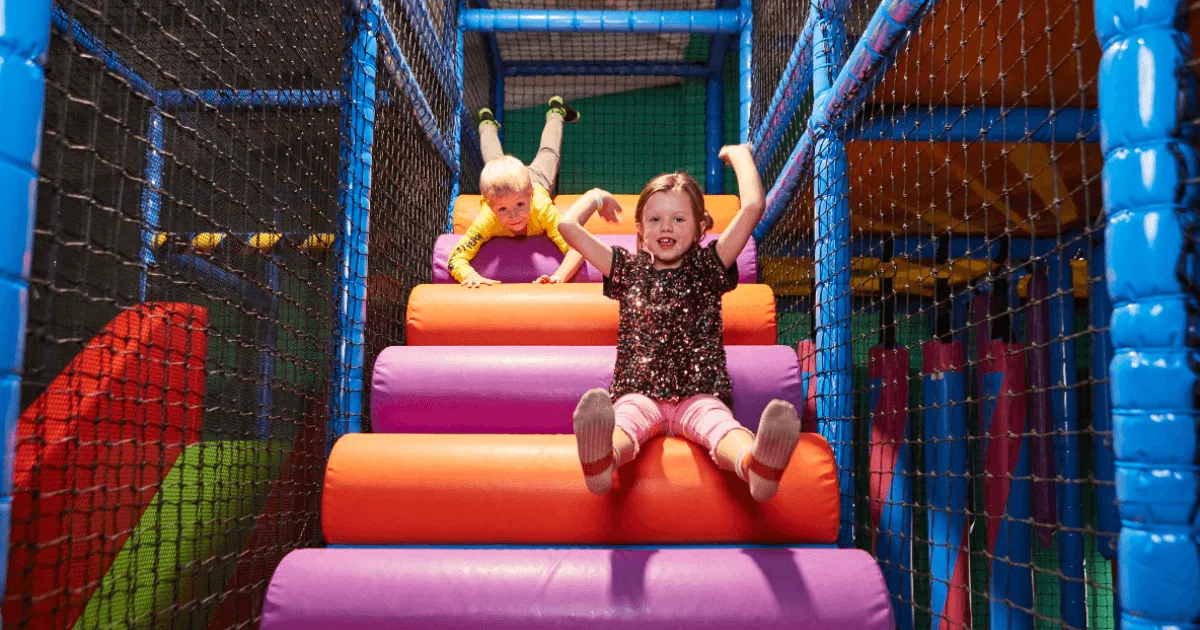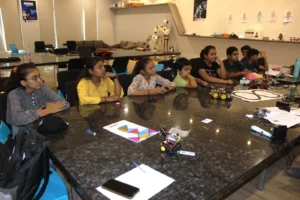Blogs
The Role of Interactive Play in Soft Play Areas: Engaging Kids with Sensory Play
Interactive play is a crucial element in designing engaging soft play areas that support children’s physical, cognitive, and sensory development. Incorporating interactive play activities into these spaces encourages children to explore, problem-solve, and engage in meaningful play that stimulates their imagination. Sensory play, which involves activities that use touch, sight, sound, and movement, offers unique benefits for young minds. This guide explores how to integrate interactive play and sensory elements into your soft play area design, creating an environment where children can learn, grow, and have fun.
What is Interactive Play and Sensory Play?
Interactive play refers to activities where children actively engage with their environment or with other children. This kind of play encourages social interaction, communication, and cooperation. It also helps children develop important motor skills. Sensory play, on the other hand, is a subset of interactive play that involves stimulating a child’s senses, such as touch, taste, smell, sight, and hearing.
- Sensory Play Benefits: Sensory play supports brain development, enhances motor skills, and fosters emotional and cognitive growth. It can help children understand the world around them through exploration and experimentation.
- Interactive Play Benefits: Interactive play enhances social skills, encourages teamwork, and boosts self-confidence in children. It can also help them develop problem-solving skills and build creativity.
Why Interactive Play is Essential in Soft Play Areas
Incorporating interactive play in soft play areas provides a rich and dynamic environment where kids can experiment and learn. These play areas become more than just spaces for physical exercise—they transform into interactive worlds where children engage in activities that develop their sensory and cognitive abilities.
- Engaging Kids through Sensory Play: Sensory play encourages children to explore different textures, sounds, and movements, fostering creativity and curiosity. By interacting with various materials, such as textured surfaces or musical instruments, children can engage all five senses, stimulating brain development.
- Building Social Skills: Interactive play areas encourage group play, where children can share, communicate, and collaborate with others. This helps in developing social bonds and cooperative play skills.
- Physical Development: Through interactive games and activities, children can develop their physical skills, such as balance, coordination, and strength. Activities like playground slides, ball pools for kids, and interactive climbing structures provide opportunities for physical play while also incorporating interactive elements.

Interactive Play Elements to Incorporate in Soft Play Areas
Designing a soft play area with interactive elements can make a huge difference in how children experience the space. Here are some ways to incorporate interactive play and sensory play into the layout:
- Interactive Play Panels: Interactive play panels are a great addition to soft play areas, especially for toddlers and preschoolers. These can include features like gears, levers, mirrors, or animal shapes that children can manipulate. Panels with sound or light effects further engage children’s senses.
- Ball Pools for Kids: Ball pools are a classic feature in soft play areas, providing a sensory-rich environment for young children. The tactile experience of playing with colorful balls helps develop their touch and sensory integration.
- Role Play Activities for Kids: Role play activities for kids encourage imaginative play, where children can act out different scenarios like running a store, cooking, or playing doctor. These activities foster creativity and social interaction, helping children understand different roles and social dynamics.
- Sound and Music Play: Incorporating musical elements, such as chimes, xylophones, or drums, into the indoor play structures encourages auditory exploration. The sound of music stimulates children’s hearing and helps them develop rhythm and coordination.
- Tactile Walls: Tactile walls with various textures, buttons, and switches can create an exciting sensory experience. Children can touch, explore, and learn about different surfaces and materials, enhancing their fine motor skills.
How Interactive Play Supports Child Development
Interactive play in soft play areas not only entertains children but also supports their holistic development. The combination of sensory and social play helps children grow physically, mentally, and emotionally.
- Cognitive Development: Interactive elements like puzzles, logic games, and cause-and-effect panels stimulate problem-solving skills. By manipulating objects and figuring out how things work, children enhance their reasoning abilities.
- Motor Skills Development: Activities such as climbing, sliding, or jumping help children develop their gross motor skills, such as balance, coordination, and agility. Soft play equipment that includes climbing walls, slides, or obstacle courses promotes active play while encouraging physical development.
- Emotional Development: Sensory play and interactive games can help children learn to express themselves, cope with different emotions, and understand social cues. Playing with peers in these environments boosts confidence and fosters a sense of independence.

Creating a Safe and Stimulating Environment for Interactive Play
Safety is always a priority when designing a soft play area, especially when incorporating interactive and sensory elements. Ensure that all materials and equipment are child-friendly, non-toxic, and free from sharp edges. Soft surfaces, such as foam padding or cushioned flooring, should be used to prevent injuries, while clear boundaries should be set to avoid overcrowding.
- Playground Equipment Installation: When installing playground equipment, ensure that all features are securely fastened and safe for children to interact with. It’s important to choose equipment that is durable and designed for heavy use in commercial settings.
- Indoor Play Structures: For indoor playground design, choose structures made from materials like high-density polyethylene (HDPE) that are easy to maintain and clean, ensuring a hygienic and safe environment for kids to explore.
- Playground Design Services: Partnering with experienced playground design services can ensure that the play area layout is optimized for safety, accessibility, and fun. These services can help incorporate interactive elements while maintaining a balance between sensory stimulation and safety.

Conclusion
Incorporating interactive play and sensory play elements into soft play areas offers numerous developmental benefits for children. By designing spaces that stimulate all five senses and encourage social interaction, you create environments that are both fun and educational. Whether you’re designing a home play area or a commercial indoor play structure, thoughtful planning and the use of high-quality materials can ensure a safe and enriching experience for kids. Interactive play fosters creativity, problem-solving, and social skills, laying the foundation for a lifetime of learning and growth.
At Peach Prime Consultancy, we specialize in creating tailored designs for FECs that optimize space, improve guest flow, and provide a seamless experience. We specialize in budget planning and cost estimation to ensure your project stays within financial expectations. By providing a detailed breakdown of the total project cost. Our team of experts will work with you to design an FEC layout that maximizes efficiency, minimizes congestion, and elevates the overall guest experience. we specialize in budget planning and cost estimation to ensure your project stays within financial expectations. By providing a detailed breakdown of the total project cost. Our expertise extends to cities like Contact us today to start planning the perfect indoor amusement center for your guests!









